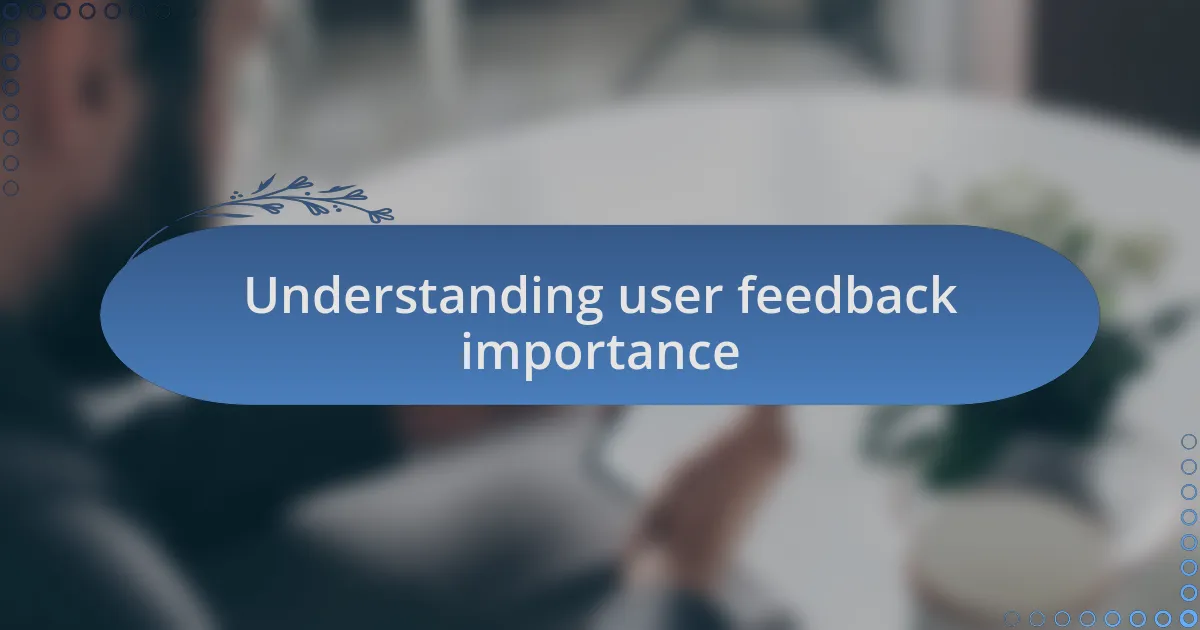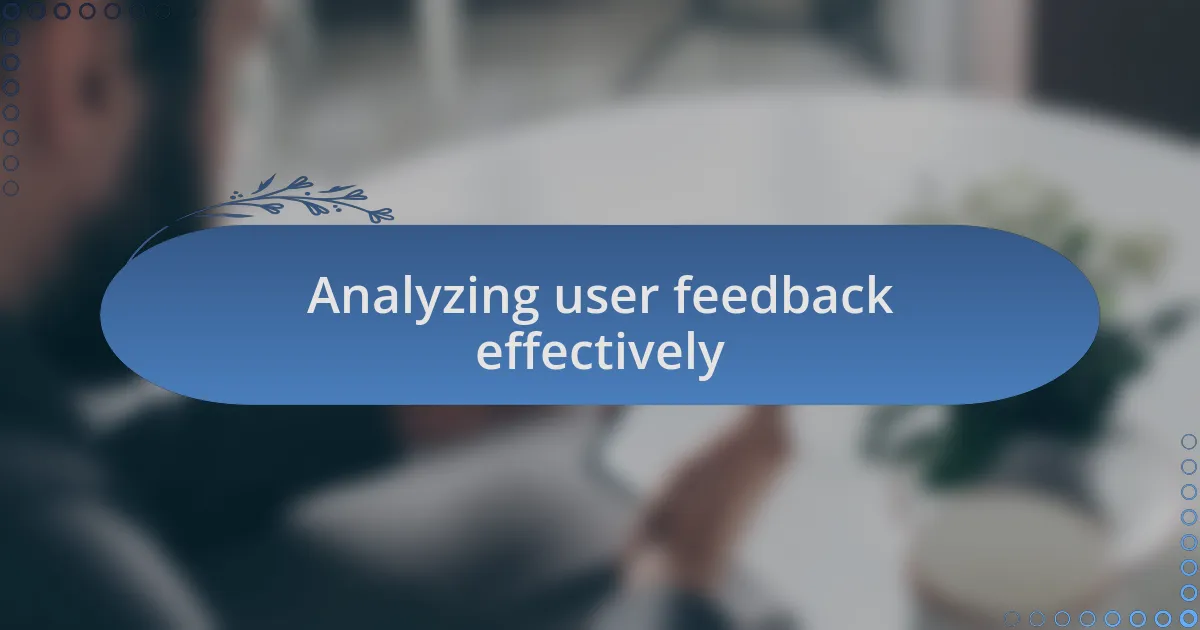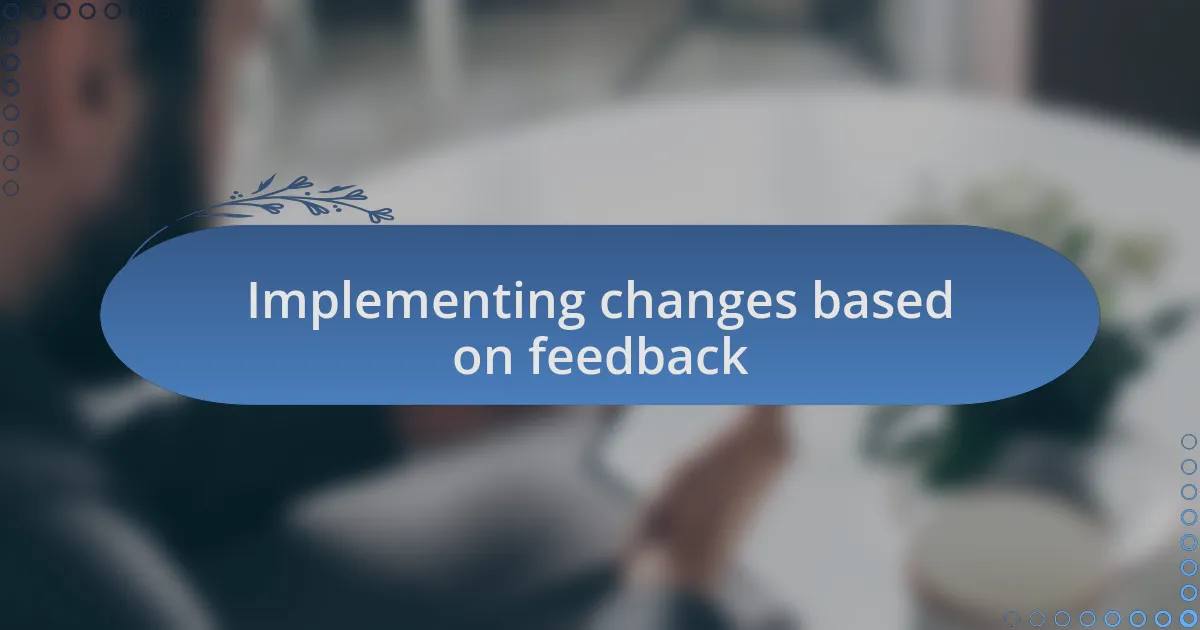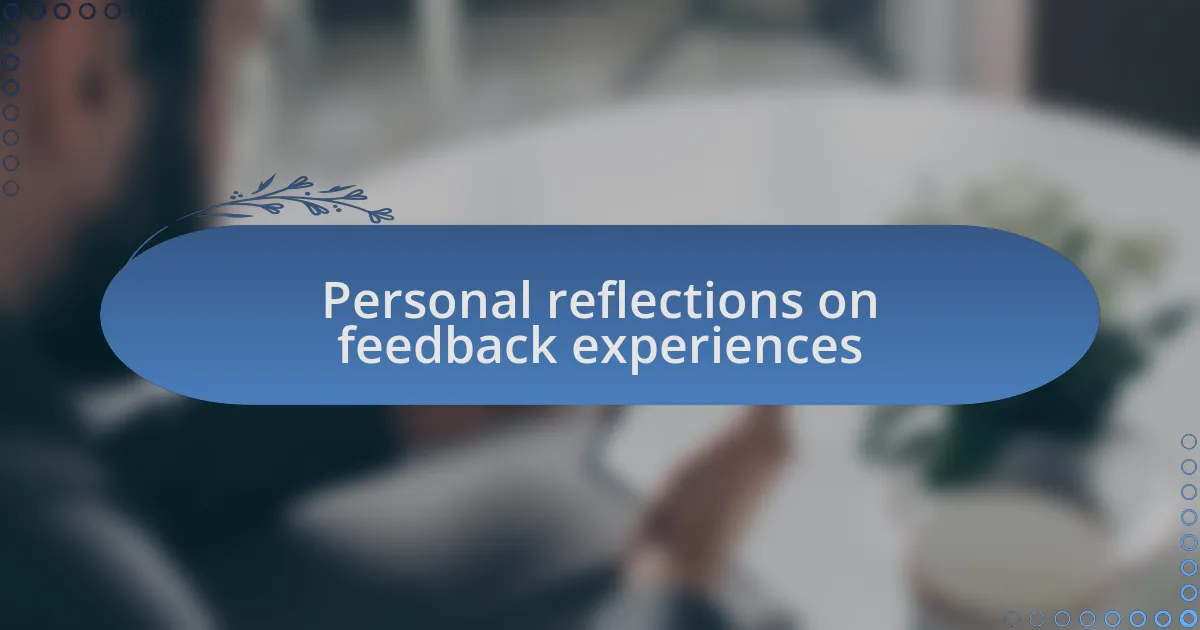Key takeaways:
- User feedback is crucial for improving user experience, revealing insights that may be overlooked by developers.
- Various sources of feedback, including surveys, social media, and website analytics, provide diverse perspectives on user needs.
- Analyzing feedback involves identifying themes and patterns, which can guide meaningful changes to enhance usability and user satisfaction.
- Implementing user suggestions, even minor adjustments, can significantly impact user engagement and build stronger connections with users.

Understanding user feedback importance
User feedback is like a compass, guiding web developers on the right path to meet user needs. I remember a time when I launched a new feature based purely on my assumptions. The feedback was eye-opening: users found it confusing, which taught me that my perspective wasn’t the only one that mattered.
When I first started taking user feedback seriously, I was amazed at the wealth of knowledge contained within those comments. There was this one instance where a user pointed out a minor glitch that I had overlooked; fixing it not only improved the experience for everyone but also boosted user satisfaction. How often have I missed the mark simply because I wasn’t listening?
Understanding the importance of user feedback can transform a product. It creates a cycle of ongoing improvement and fosters a deeper connection with users. I truly believe that it’s not just about addressing issues but embracing the insights they provide. After all, who better to guide your service than the people using it every day?

Common sources of user feedback
Common sources of user feedback come in various forms, each providing unique insights into user experiences. For instance, I often find that surveys yield direct responses to specific questions, allowing users to express their feelings on particular features. Once, after sending out a survey post-launch, I was surprised to discover recurring themes in the feedback that I hadn’t anticipated—I learned that users greatly valued speed over aesthetics, which reshaped my focus for future updates.
Another significant source of feedback is through social media platforms. Engaging in conversations with users on these sites can reveal their sentiments in a more casual context. I remember when a tweet opened up a dialogue about a design flaw I had overlooked; it was rewarding to see how quickly I could engage with users and address their concerns in real-time.
Lastly, website analytics provide a treasure trove of data to gauge user behavior indirectly. By examining where users click or how long they stay on certain pages, I’ve often realized areas that need refinement. Isn’t it fascinating how numbers can tell stories if we stop to listen? This data-driven feedback, coupled with personal interactions, has allowed me to create more user-centric solutions.

Analyzing user feedback effectively
When I sit down to analyze user feedback, I often start by categorizing the comments into themes, which helps me identify common pain points. For example, I once sifted through dozens of reviews and found that many users mentioned difficulty navigating a particular feature. That moment was eye-opening; it highlighted how the user’s experience could profoundly impact their overall satisfaction, compelling me to prioritize usability improvements.
Another effective approach I’ve used is to look for patterns in both qualitative and quantitative feedback. I recall an instance where a dip in page engagement coincided with a pattern of complaints about load times. This correlation drove me to dive deeper into performance optimization, leading to a significant increase in user retention. How often do we overlook the connection between what users say and what the data shows? Balancing both facets of feedback can illuminate pathways for improvement.
I’ve also learned the importance of follow-up in analyzing feedback. After implementing changes based on user suggestions, I often reach out to those same users to gauge their thoughts on the updates. One time, a user thanked me for addressing her concerns about a feature, sharing that it felt great to be heard. That emotional connection not only validates my efforts but also reinforces the value of continuous engagement with users in the development process.

Implementing changes based on feedback
Implementing changes based on user feedback has been a transformative experience for me. I remember the time when users critiqued the overall design of our homepage. Their passion about this issue resonated with me; I realized that aesthetics can dramatically influence how users engage with the site. So, I took a leap and revamped the layout, resulting in a noticeable uptick in user interaction and satisfaction.
One of the most rewarding aspects of this process is witnessing the impact of small adjustments. Not long ago, after addressing a specific complaint about a confusing form, I received an email from a user who had almost given up on submitting it. She expressed her gratitude for the changes, saying it made her experience so much smoother. That feedback reaffirmed my belief that even minor modifications can lead to significant improvements in user experience.
I often find myself pondering the balance between user desires and technical feasibility. When a feature request from users seems daunting, I remind myself that even incremental changes can foster loyalty. For instance, when I implemented a requested change to provide clearer error messages, I didn’t initially expect much. But the positive feedback that followed was immensely gratifying, underscoring how listening to user insights isn’t just about fixing problems – it’s about building a connection. What have you done lately to turn feedback into actionable improvements?

Personal reflections on feedback experiences
There’s something uniquely humbling about receiving user feedback that highlights areas for improvement. I can recall an instance where a user pointed out the lack of mobile optimization on our site. I felt both challenged and motivated; it pushed me to prioritize mobile-friendly design. The result? A surge in mobile traffic just proved to me that paying attention to user voices directly shapes our success.
Reflecting on these experiences, I often find that the most unexpected critiques can lead to the best insights. One day, I noticed feedback about the lack of a community space on our website. At first, I didn’t see the value in it, but then I realized how vital connection is for users. That insight sparked the creation of a forum, which not only fostered interaction but also created a sense of belonging among users. Have you ever felt surprised by a user’s suggestion that turned out to be a game-changer?
Every piece of feedback I receive serves as a reminder that my work is a collaborative journey. Sometimes, when I implement changes based on user comments, I benefit from an emotional boost as I see their satisfaction reflected in engagement metrics. It’s not just about addressing issues; it’s about nurturing relationships with users who invest their time in my services. Isn’t it fulfilling to see how that openness can lead to shared success?